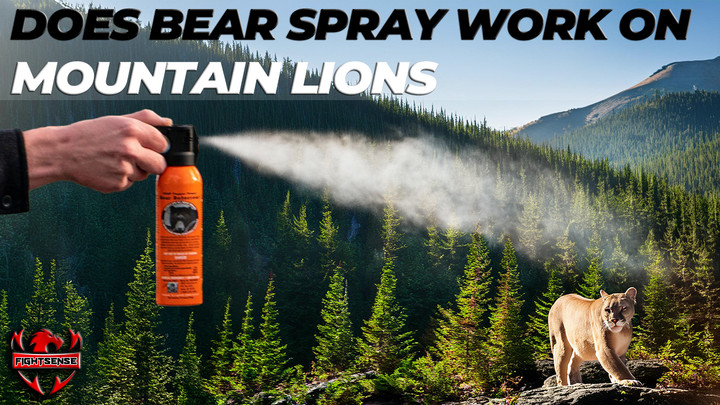Does Bear Spray Work on Mountain Lions? Find Out Now
31st Dec 2024
Encountering wildlife while exploring the great outdoors can be exhilarating but also dangerous. Among the many tools adventurers use for safety, bear spray is a common choice for deterring aggressive animals. But a pressing question often arises: does bear spray work on mountain lions?
This blog will provide a detailed look at the effectiveness of bear spray on mountain lions, how to use it correctly, and additional precautions to ensure your safety in the wild.
Keynotes
- Does bear spray work on mountain lions? Yes, it is effective in most cases when used correctly.
- Aim directly at the mountain lion’s face to maximize impact.
- Use short bursts to conserve spray and maintain control.
- Combine bear spray with other safety measures like group travel and making noise.
- Always check local regulations before carrying bear spray.
What is Bear Spray?
Bear spray is a non-lethal deterrent designed to stop aggressive animals, especially bears, by temporarily impairing their vision and respiratory system. It contains capsaicin, the active ingredient in chili peppers, and disperses an intense, concentrated spray that creates a cloud of irritation for the animal.
Though primarily marketed for bears, the question remains: does bear spray work on mountain lions?
Does Bear Spray Work on Mountain Lions?
The short answer is: yes, bear spray can work on mountain lions. While mountain lions are different from bears in behavior and physiology, the powerful effects of bear spray can effectively deter them in most cases. Here’s how:
- Impact on Senses: The capsaicin in bear spray irritates the eyes, nose, and lungs of mountain lions, causing them to retreat.
- Range and Coverage: Bear spray typically ranges 20-30 feet, allowing you to maintain a safe distance from the animal.
- Immediate Reaction: In most documented cases, mountain lions exhibit a strong aversion to the spray and flee upon exposure.
However, effectiveness depends on proper use, situational awareness, and a bit of luck.
How to Use Bear Spray Effectively on Mountain Lions
Using bear spray properly is critical to its success. Follow these steps to ensure it works when needed:
- Stay Calm: In the face of a mountain lion, don’t panic. Slowly retrieve your bear spray.
- Position Yourself: Hold the spray with both hands for better control, aiming slightly downward.
- Aim for the Face: Spray directly at the mountain lion’s face as it approaches.
- Short Bursts: Use 1-2 second bursts rather than continuous spraying to conserve the spray for multiple uses.
- Maintain Distance: While spraying, back away slowly to increase space between you and the animal.
Additional Tips for Mountain Lion Safety
Although bear spray can work on mountain lions, it’s not a foolproof solution. Here are other safety measures to follow:
- Travel in Groups: Mountain lions are less likely to approach larger groups.
- Make Noise: Announce your presence to avoid startling a mountain lion.
- Carry a Whistle: Loud, sharp noises can scare off wildlife.
- Do Not Run: Running can trigger a mountain lion’s predatory instincts.
- Stay Vigilant: Be aware of your surroundings, especially in areas known for mountain lion activity.
Legal and Ethical Considerations
Bear spray is legal in most regions, but check local regulations before carrying it. Use it responsibly and only in genuine self-defense situations.
Conclusion
Encountering a mountain lion in the wild is a rare but serious situation. While bear spray can work on mountain lions, it should always be part of a broader safety plan that includes awareness, preparation, and adherence to local regulations. By understanding how to use bear spray effectively and combining it with other preventive measures, you can greatly reduce the risk of harm to yourself and others. Stay informed, stay alert, and enjoy the outdoors responsibly.
Disclaimer:
This blog is for informational purposes only. Always follow local guidelines and expert advice when dealing with wildlife.

